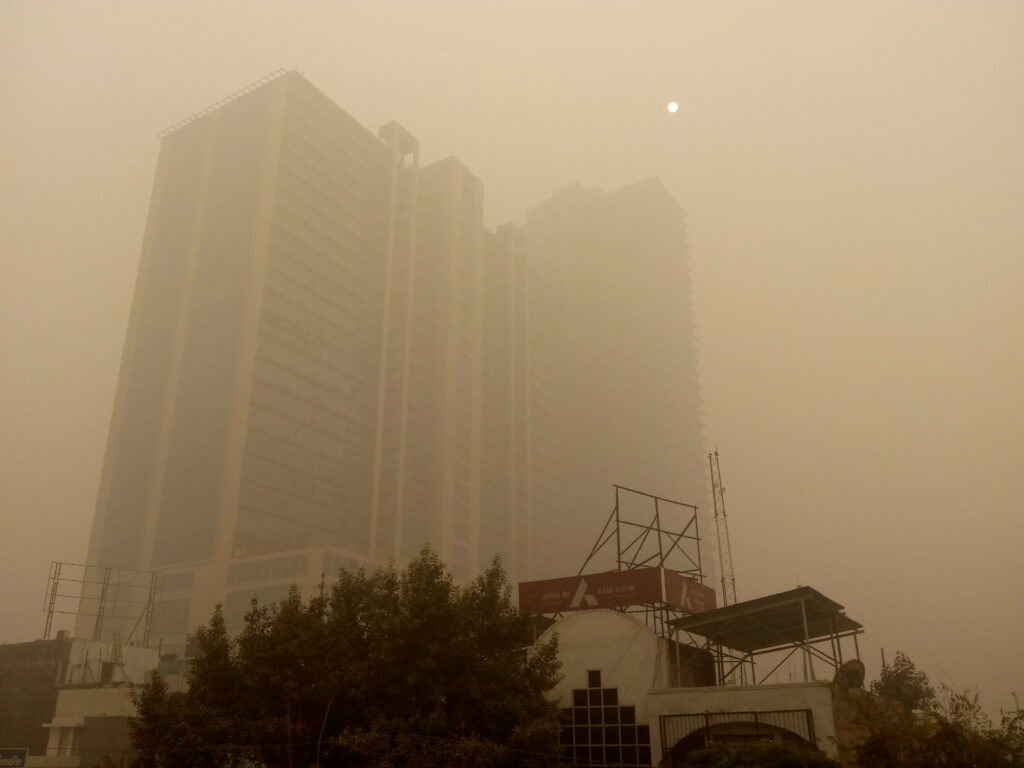Delhi’s post-Diwali air pollution reaches hazardous levels, with media outlets intensifying coverage on health risks, political debates, and urgent calls for action.

By Newswriters News Desk
Delhi’s air pollution crisis has escalated into a recurring public health emergency, with the post-Diwali period marking its most severe manifestation. Recent media coverage has intensified, reflecting heightened public concern and governmental scrutiny. This report analyzes the media’s portrayal of Delhi’s air pollution, examining coverage patterns, framing techniques, and the implications for public awareness and policy
Surge in Pollution Levels Post-Diwali
Following the Diwali celebrations on October 21, 2025, Delhi’s air quality deteriorated sharply. The Air Quality Index (AQI) soared above 400, categorizing the air as ‘severe’ and posing significant health risks. Particulate Matter (PM2.5) levels reached 488 µg/m³, more than three times the pre-festival level of 156.6 µg/m³, marking the highest pollution levels in five years Business Standard. This spike was attributed to widespread firecracker use, despite a Supreme Court-mandated relaxation allowing ‘green crackers’ during restricted hours. Reports indicated significant non-compliance, exacerbating the pollution levels Reuters+1.
Media Framing and Coverage Patterns
Media outlets have predominantly framed the pollution crisis as an urgent public health emergency. The Guardian highlighted the onset of the city’s annual pollution crisis, emphasizing the severe health impacts of the toxic haze The Guardian. AP News focused on the hazardous smog engulfing New Delhi, attributing it to widespread firecracker use and other seasonal pollution factors AP News. The Times of India reported that 36 out of 38 monitoring stations recorded ‘red zone’ AQI levels, with four stations exceeding ‘severe’ thresholds The Times of India.
Coverage has also delved into the political dimensions of the crisis. BJP MP Manoj Tiwari claimed that Delhi’s air quality could improve within 2 to 2.5 years, attributing potential progress to stringent pollution control measures and technological solutions The Times of India. This statement sparked a political rebuttal from the Aam Aadmi Party (AAP), highlighting ongoing political contention over pollution management strategies in the national capital
Public Health Implications
The media has underscored the severe health risks associated with the pollution spike. The Times of India reported that the hazardous air quality threatens not only the lungs but also the heart, brain, blood vessels, and immune system, potentially leading to lasting health consequences The Times of India. Scientific studies have quantified the impact, with the Energy Policy Institute at the University of Chicago’s Air Quality Life Index (AQLI) report indicating that Delhi residents are losing 8.2 years of their life expectancy due to high PM2.5 concentrations epic.uchicago.in
Media’s Role in Public Awareness and Policy
The intensified media coverage has played a crucial role in raising public awareness about the severity of Delhi’s air pollution crisis. By highlighting the health risks and political dynamics, media outlets have contributed to a broader public discourse on the issue. However, the reliance on news agency reports, as noted in a study examining coverage in The Hindu and The Times of India, suggests that in-depth investigative reporting may be limited snurb.info.
Conclusion
The media’s coverage of Delhi’s air pollution crisis has evolved from sporadic reporting to a sustained focus on public health and political accountability. While this has led to increased public awareness, the persistence of the crisis indicates the need for more comprehensive and sustained media engagement. Future coverage should aim to provide deeper insights into the effectiveness of policy measures and the roles of various stakeholders in mitigating the pollution crisis.




